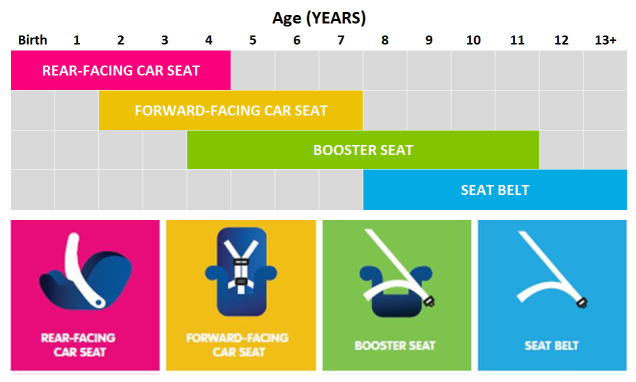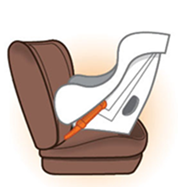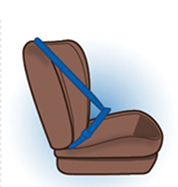Car Seat Guidelines for Families
As children grow, how they are secured in your vehicle will change based on their age, weight, height and developmental needs. The following guide will help you choose the correct child restraint for each stage of your child’s growth and development. It is imperative that families do not skip a step for the optimal safety of their child.
Buckle Up – Every Age, Every Stage
Before Baby Arrives
When you’re an expectant mother, it’s important to always wear your seat belt to protect you and your unborn child. Wear the lap belt across your hips and below your belly with the shoulder belt across your chest (between the breasts).

Rear-Facing

All infants and toddlers should ride in a rear-facing car seat until they reach the highest weight or height allowed by the manufacturer of the car seat. Pennsylvania law requires children younger than 2 years of age to always ride in a rear-facing car seat.
Never place a rear-facing car seat in the front seat with an active passenger-side front air bag.
Traveling rear-facing is safer than forward-facing.
Forward-Facing

Children who have outgrown the rear-facing car seat, should be secured in a forward-facing car seat with a harness for as long as possible, up to the highest weight or height allowed by the manufacturer of the car seat.
Forward-Facing car seats reduce the risk of injury for children by 71% compared to children using the seat belt only.
Belt-Positioning Booster Seat

All children whose weight or height is above the forward-facing car seat limit, should be secured in a belt-positioning booster seat with a lap and shoulder belt until the seat belt fits properly, typically when a child is approximately 4 feet 9 inches and between 8 and 12 years of age.
Booster seats lower the risk of injury for children age 4 to 8 years by 45% compared to children using the seat belt alone.
Seat Belt

When children outgrow the belt-positioning booster seat, secure them in a properly fitted lap and shoulder belt. A lap and shoulder belt fits properly when the lap belt lays low and snug across the hips/upper thighs and the shoulder belt fits across the center of the chest and shoulder.
The lap and shoulder seat belts reduce the risk of injury by 45%.
All children younger than 13 years of age should be secured in a back seat of the vehicle. In the event of a crash, even buckled up, a child is more likely to be injured or killed if they are sitting in the front seat. Whether they are in a car seat, booster seat, or using a seat belt, the only place where your children under 13 belong is in the back seat.
Remember:
Read and carefully follow the installation instructions included with a car seat, as well as the vehicle owner’s manual. Failure to do this can lead to incorrect installation, exposing a child passenger to the risk of injury or death in a crash.
